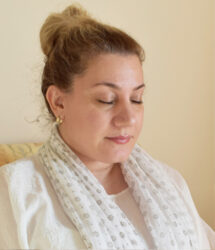The Double-Edged Sword of Resilience

We’ve all been inspired by stories of women who faced extreme adversity as children yet grew up to do great things—think Maya Anjelou, Oprah Winfrey, Eleanor Roosevelt. It turns out that such natural resilience (i.e. the ability to thrive whether living in a supportive environment or not) may be found in our genes.
In his thought-provoking NY Times Sunday Review essay,“The Downside of Resilience,” researcher Jay Belsky reports that children with certain genetic predispositions to depression or ADHD are more influenced by their environment than others.
He writes that such genetically predisposed children are “like delicate orchids; they quickly wither if exposed to stress and deprivation, but blossom if given a lot of care and support. Others are more like dandelions; they prove resilient to the negative effects of adversity, but at the same time do not particularly benefit from positive experiences.”
To back up this theory of the genetics of resilience, Belsky, a professor at the University of California in Davis, cites a body research — including seven studies and a meta-analysis —which will appear later this year in a special section of Development and Psychopathology edited by Belsky and Marinus H. van IJzendoorn of Leiden University.
These studies revealed that the resilient children didn’t benefit from interventions such as counseling, parental support and tutoring. In other words, these “resilient” students were not affected as much by a stressful environment, nor did they flourish when given extra attention.
Therefore, Belsky laments, the dollars spent in school and government programs of intervention are being wasted on the students who are more resilient to begin with. He even goes so far as to suggest that in the future children could be tested so public funds would be spent only on those who were likely to benefit from such programs!
I can’t imagine such a world, in which a genetic test would determine whether or not an at-risk child should receive additional support to overcome the problems created by poverty, abuse or neglect.
What I can imagine is spending public funds on better interventions—scientifically proven programs that truly help every child to succeed, not just some of the children.
Belsky himself touches on this point when he writes, “After all, we don’t know if the children who seem insusceptible to interventions truly are, or whether they’re simply not affected by what is currently being provided.”
To me, this is the main point. Interventions such as counseling, tutoring and parental support are limited by the skill of the counselor, teacher or parent—and the child’s cooperation.
But what if there were a simple, natural intervention that helped a child to be more healthy, happy and resilient to stress no matter what their genetic disposition? In other words, an intervention that could truly “lift all boats.” Something that could help every child—whether they were initially resilient or not—to become more creative, to achieve better grades and success in life.
Fortunately, this is not a fantasy—such a program does exist. Peer-reviewed research has revealed that these kinds of results are experienced in schools that have adopted the Transcendental Meditation Quiet Time program.
Transcendental Meditation is a simple, natural, effortless technique practiced 20 minutes twice each day while sitting comfortably with the eyes closed. It is easy to learn and enjoyable to practice, and is not a religion, philosophy, or lifestyle. Over six million people have learned it and over 350 published research studies have found that the TM technique markedly reduces stress, anxiety, and fatigue, improves learning ability, and promotes balanced functioning of mind and body. TM enlivens the functioning of the prefrontal cortex, thus giving children the natural ability to make better decisions, to focus more on their studies and enjoy more coherent behavior.
Hundreds of peer-reviewed research studies confirm that TM practitioners experience significant improvements in mental, physical and emotional balance through regular practice of Transcendental Meditation, regardless of the participant’s age, race, academic ability, economic status or existing stress levels.
And it’s been tested in schools. Public and private schools throughout the U.S. and around the world have benefited from the Transcendental Meditation/Quiet Time program, where students have the option to sit quietly for a few minutes or to practice the Transcendental Meditation technique.
As just one example, a recent study conducted by the University of Connecticut found that at-risk adolescents in three high schools experienced reduced levels of stress, anxiety, hyperactivity, and emotional problems when practicing the TM technique over a period of four months at school, as compared with controls.
In light of this discussion on resilience to negative environments, it’s interesting to note another result of the Quiet Time program. Research shows that TM practitioners not only become more resilient to stress with regular practice, but when enough students and teachers practice TM twice a day at school, they actually create a healthier and more positive school environment.
This can turn violent schools into peaceful ones. Case in point: One of San Francisco’s most violent of middle schools, Visitation Valley, is now enjoying startling results from teaching children and teachers to practice the Transcendental Meditation technique twice a day. Research shows a 98% increase in attendance, a 78% decrease in suspensions, and significantly less bullying, violence and mayhem.
Thus by mitigating stress, violence and other impediments to learning, Quiet Time is a proven way to help students and stressed teachers alike. As Belsky writes, “The ultimate goal should not be to save money, but rather to spend it more wisely.”
About the Author
Linda Egenes writes about green and healthy living and is the author of six books, including The Ramayana: A New Retelling of Valmiki’s Ancient Epic—Complete and Comprehensive, co-authored with Kumuda Reddy, M.D.
More Posts by Linda
- Tired and Burned Out? Transcendental Meditation Can Help: An Interview with Dr. Nancy Lonsdorf, MD
- Worried About the Future? Six Ways to Calm Your Anxiety
- What Do You Carry in Your Self-Care Tool Kit?
- Five Strategies for Family Caregivers
- From the Streets to College in Four Months: The Communiversity of South Africa Empowers Underserved Youth in Cape Town





